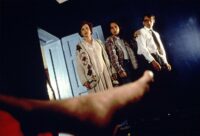This article is one of a three-part package. There’s also the premiere episode of 25YearsLater’s first podcast, called The Criterion Collectors, where I and 25YL writers Katie Bienvenue and Gus Wood discuss some of the films in Criterion Godzilla boxset. Katie, Gus, Hawk Ripjaw and I also produced a video discussing the Top 10 Reasons to Watch Godzilla’s Showa Era.
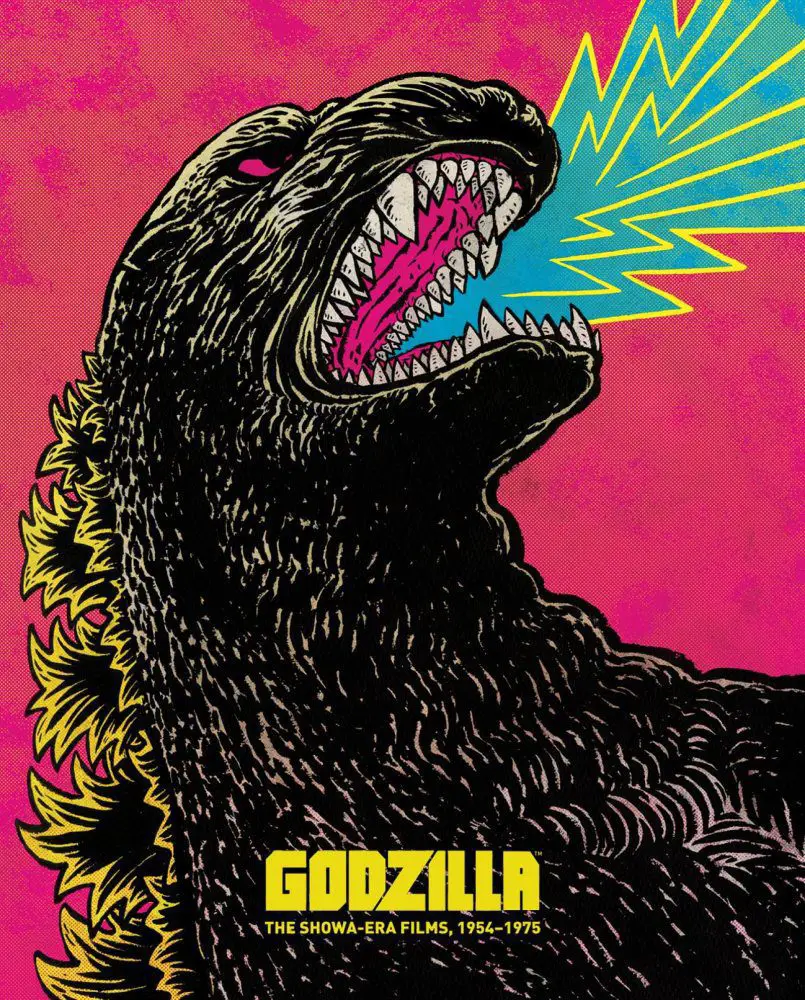
For the Criterion Collection’s eagerly anticipated 1,000th spine DVD/Blu-ray release, the company released the first 15 Japanese films in the Godzilla franchise in an excellently designed, presented and restored boxset. Toho released these films from 1954-1975 during what’s been called the Showa Era. They’re a varied and interesting lot, and we’re taking a quick look at each one today.
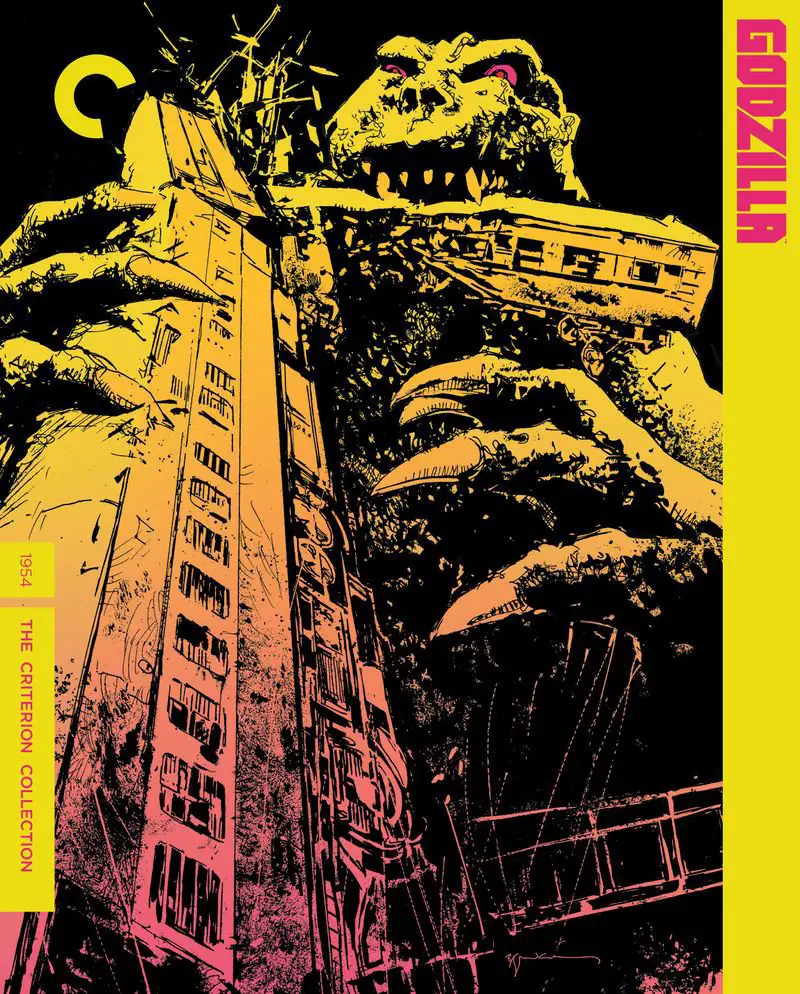
Godzilla (1954)
A mysterious force is destroying Japanese ships and eating all the fish near Odo Island. Paleontologist Dr. Kyohei Yamane (Takashi Shimura) investigates and discovers an ancient dinosaur awakened by recent hydrogen bomb testing in the ocean. Bullets, tanks, power lines, buildings, and everything else fail to slow down Godzilla (Haruo Nakajima and Katsumi Tezuka) as it destroys everything in his path. The key to its defeat may lie with the love-triangle between Yamane’s female colleague (played Momoko Kōchi), a salvage ship captain (played by Akira Takarada) and a scientist (played by Akihiko Hirata), who’s working on a secret experiment.
Godzilla is the bleakest of the series. It’s practically film noir-like in its dark, moody, fantastic black-and-white photography by Masao Tamai. The cinematography manages to make Godzilla—a pure destructive force of nature at this point—nightmarishly frightening. Akira Ifukube’s score is perhaps the finest of all giant monster movies. The human story is excellently acted and the best of the 15 films. Godzilla as a metaphor for nuclear war is gut-punching in its imagery and message. Suffice to say, the Showa Era never topped Godzilla.

Godzilla Raids Again (1955)
A new kaiju of the same species, look, manner, and name of the original pre-historic terror sprouts out of the ocean. This time it is up to the military and two pilots (played by Hiroshi Koizumi and Minoru Chiaki) to stop this new Godzilla (Nakajima) from destroying Japan. But this time, Godzilla isn’t alone. A spiny kaiju dubbed Anguirus (Katsumi Tezuka) arises, and it is destined to cause its own destruction on its way to a mono e mono battle with Godzilla.
Godzilla vs. Anguirus is more an obstacle during Godzilla’s journey and ultimate final tussle with the human characters and isn’t featured as prominently as later kaiju battles. I love Anguirus’s design. I’m sad it doesn’t get its day in the sun here. The human characters are a huge letdown. Their stories were uninteresting, and their personalities sometimes caricatures. So, I found it difficult to care about their fates. While future entries would dial up the camp and the silly, Godzilla Raids Again still has a semblance of the first film’s seriousness, even if it is considerably lighter than that movie. But neither the drama nor the comic relief works in a truly disappointing follow-up.
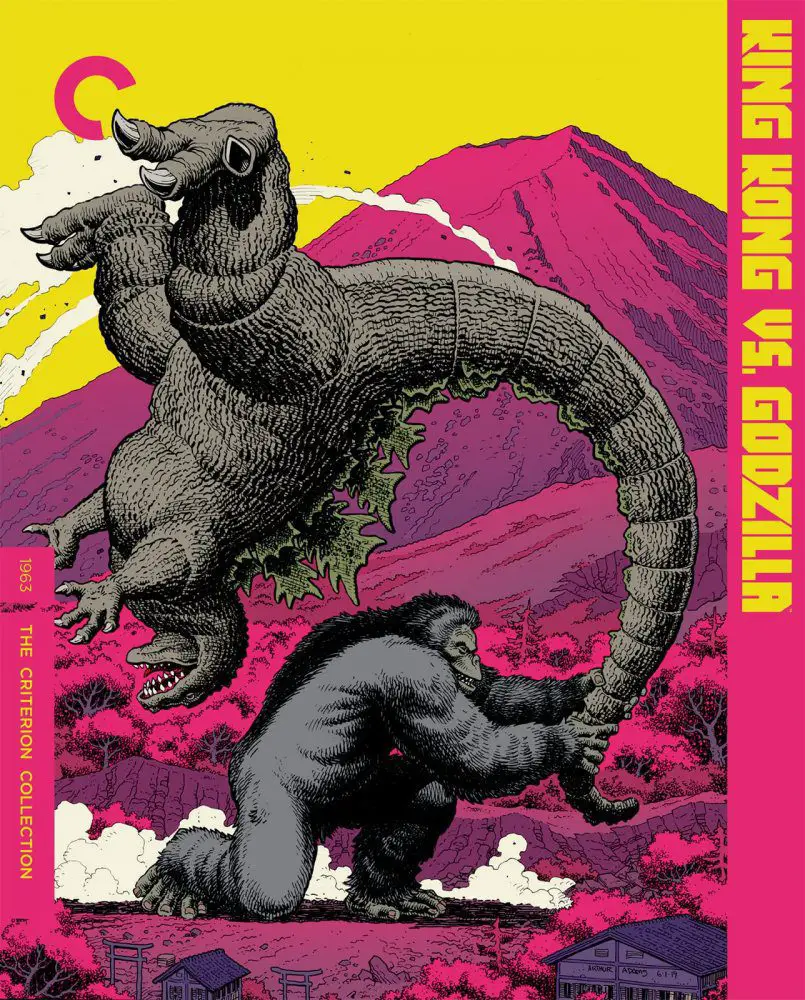
King Kong vs. Godzilla (1963)
Godzilla rises again and battles King Kong (played by Shoichi Hirose). A pharmaceutical company brings Kong from a primitive island to Japan for promotion. With Godzilla wreaking havoc, the two heavyweights are pitted against each other in the hopes the big gorilla will stop the King of the Monsters.
A tremendously silly film, King Kong vs. Godzilla is the first to make the giant monster battle the main event, but the fight is dull. It doesn’t make use of King Kong or Godzilla’s skills and special moves. It baffles the mind why this pharmaceutical company thinks King Kong is the best way to promote its business. This mystifying plot point is so ungrounded in any sort of reality that it distracts from what otherwise might’ve been a fun, if ridiculous, human story.

Mothra vs. Godzilla (1964)
Two greedy Japanese land developers (played by Kenji Sahara and Yoshibumi Tajima) claim ownership of a giant egg that washes ashore. They want to build a theme park around the discovery. But two fairies, hand-size women played by Japanese twin singers Emi Itô and Yumi Itô aka The Peanuts, travel to Japan from the secluded Infant Island, to reclaim the egg. The future version of Mothra lies within the egg. Mothra, a giant creature that’s a cross between a butterfly and a moth, serves as Infant Island’s protector. A battle ensues when the fairies agree to let Mothra fight Godzilla to keep him from destroying Japan.
Mothra vs. Godzilla is where things get weird. Some might say a series about a giant, prehistoric dinosaur type creature fighting other ancient beings is already weird, but the films we’ve seen before this are practically grounded dramas in comparison. I’ll admit it took me a film or two to acclimatize to the strangeness. Once I did, I grew to love The Peanuts as the Pixies and the other bizarre elements. Mothra isn’t as impressive and unstoppable as Godzilla. I have a hard time believing Mothra could defeat a creature shown to be so insurmountable in the first film. Still, it’s a good introduction for Mothra in this series, and it was nice to see a friendly kaiju.

Ghidorah, the Three-Headed Monster (1964)
The princess of a fictitious Asian country goes missing after an assassination attempt. Princess Selina Salno (Akiko Wakabayashi) turns up in Japan claiming she’s an alien from Venus, and she warns of impending doom. A Japanese policeman (played by Yosuke Natsuki) was supposed to serve as the princess’s bodyguard before she went missing. Now he’s searching for a royal woman. A flying kaiju named Rodan (Masanori Shinohara) emerges from the earth just as King Ghidorah (Shoichi Hirose), a flying three-headed creature from space, arrives on the planet to commit utter destruction. Mothra must convince Rodan and Godzilla to join forces if Earth is to be spared from Ghidorah.
Honestly, the introduction of aliens and even more ridiculous science probably should’ve jumped the kaiju, but the series somehow pulls it off. Ghidorah’s design could hardly be more awesome. The human characters were boring, though, and there were too many plotlines going on for my taste. The kaiju teaming up to defeat Ghidorah was fun. Moving Godzilla into a hero position was a good move. They were running out of ideas for him as a villain, and this change of pace might’ve saved the franchise from dying a quick death from repetition.
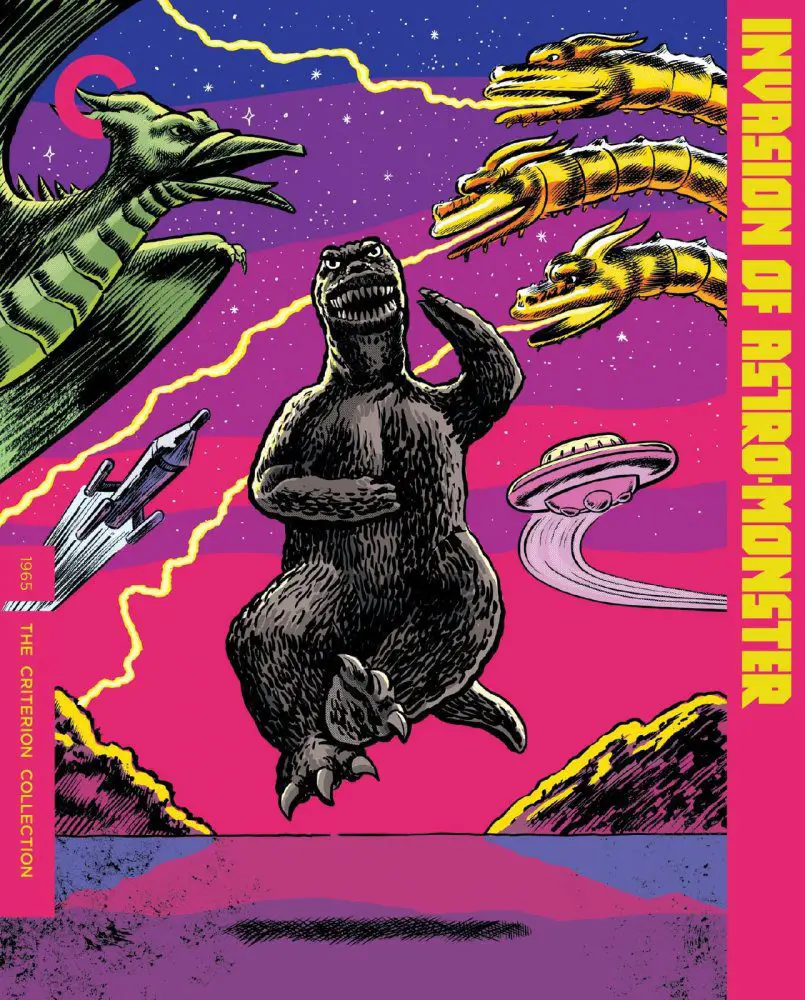
Invasion of Astro-Monster (1965)
Aliens from the mysterious Planet X take control of Godzilla and Rodan and invade Earth. It’s up to the Japanese military and two astronauts (played by Akira Takarada and Nick Adams, who’s voiced by Gorō Naya in the Japanese dub) to thwart the invasion and to break the aliens’ control over the hero kaiju.
One of the tensest entries, Invasion of Astro-Monster ramps up the stakes more than any of the previous films. The whole world is at stake this time, and with its newfound kaiju protectors now on the side of the bad guys, you really think things might be over for the human race. It was refreshing to see humanoids as our main villains. There’s only so many times in a row I can watch an evil, animalistic kaiju destroy a city before I want a more complex antagonist. The aliens and kaiju face off at the end for a very satisfying climax that will leave you relieved and giddy.
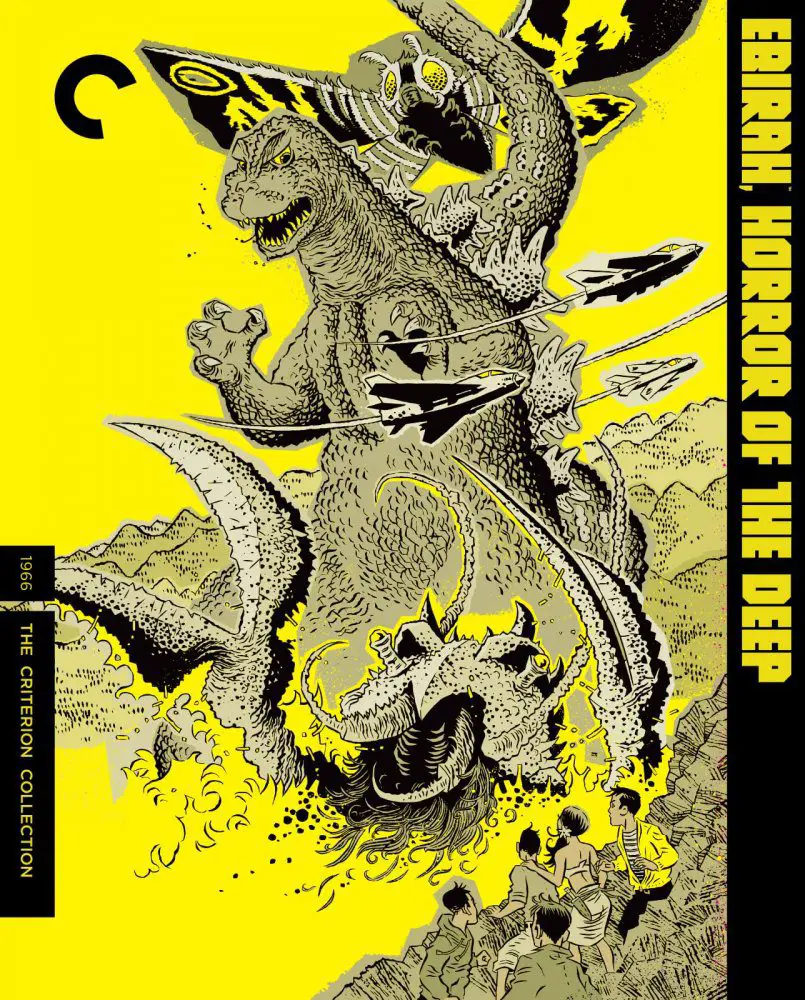
Ebirah, Horror of the Deep (1966)
Ryota’s brother Yata Kane (Toru Ibuki) is lost at sea. Ryota (Toru Watanabe) and his two friends steal a boat occupied by a bank robber (played by Akira Takarada). They end up adrift and land at an island being used by a terrorist organization led by Captain Ryuui (Akihiko Hirata). The terrorist group manufactures weapons of mass destruction while enslaving the island natives and forcing them to create a yellow liquid that keeps the sea kaiju Ebirah (Hiroshi Sekita) at bay. With the help of native girl Daiyo (Kumi Mizuno), Ryota and the others must free the islanders and foil the terrorists’ plans.
Toho sold Ebirah, Horror of the Deep directly to television. As a result, the stage and the budget are smaller. Almost accidentally, Toho was during itself a favor. After Invasion of Astro-Monster, I relished a small-scale adventure with less characters, locations and things going on. The tone has lightened again but for the better. This is a fun kaiju movie with an almost beach-film-esque score in parts, and a great, sea-based baddie for Godzilla to battle.
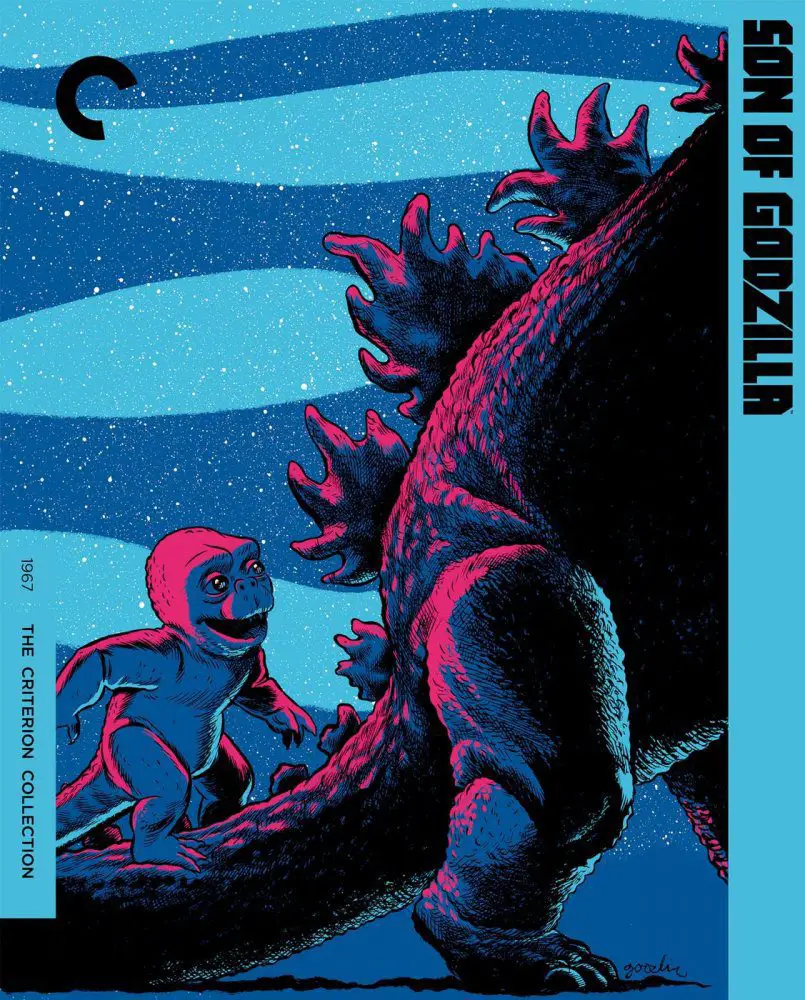
Son of Godzilla (1966)
A team of scientists work on a weather-controlling system that may be in danger when giant praying mantises begin attack the team just as a reporter (played by Akira Kubo) lands on the group’s remote-island base. Godzilla (Hiroshi Sekita, Seiji Onaka and Haruo Nakajima) arrives to save his newly hatched son, Minilla (played by Marchan), from the mantises.
Also sold to television, Son of Godzilla may surprise you with its pathos and genuinely funny comedy. Most of the former comes from the title character. Good writing and Machan’s character work often made me think back to my daughter. I bit my nails whenever Minilla found himself in a precarious spot, and I had a serious case of the sad face whenever he was distressed. As a father, the touching ending hit me hard. It was overly sad and a bit of a downer after the fun romp that preceded it, but maybe that’s a testament to how much the film got me to care about Minilla. And I can’t fault the movie for that. Plus, Godzilla fights giant insects. What’s not to love?
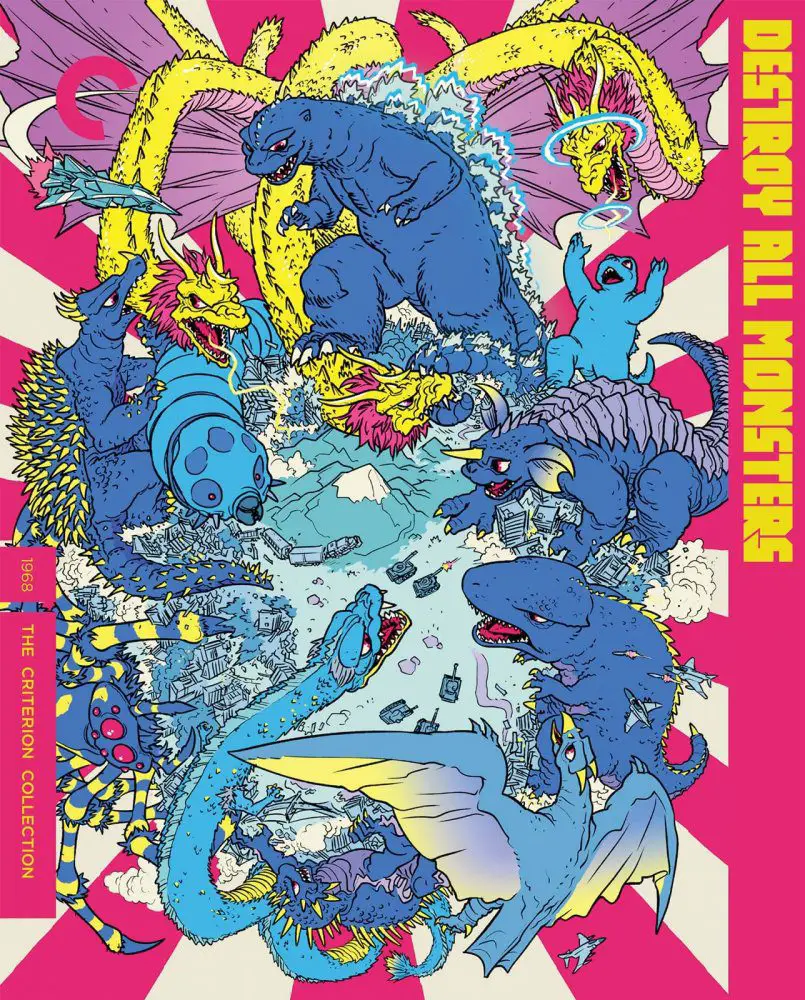
Destroy All Monsters (1968)
In the far-off future of 1999, Earth has achieved world peace. Humans are keeping all the friendly kaiju on Monster Island, where they can live in peace. But an alien force begins controlling them and a number of human scientists. With the kaiju attacking world capitals, it’s up to a team of humans to regain control of an Earth science station and the kaiju before they destroy the human race.
The series moved back to big screen territory with Destroy All Monsters. Along with Invasion of Astro-Monster, Destroy All Monsters was probably the best Showa Era alien invasion story. The odds seem even more impossible with the aliens controlling the kaiju and a team of key humans. With 11 kaiju this time out, this would’ve made a grand finale for the series.

All Monsters Attack (1969)
A little boy, Ichiro Miki played by Tomonori Yazaki, is reclusive and highly imaginative. He literally dreams of visiting Monster Island and meeting Minilla (played physically by Marchan and voiced by Midori Uchiyama) who’s fighting kaiju bullies. Ichiro hopes to meet Godzilla, but the boy has his own bullying problems in the real world. Meanwhile, two bank robbers hiding out in a deserted building take Ichiro captive after he finds one of their driver licenses. Ichiro must devise a way to escape to safety in this coming-of-age tale.
Many consider All Monsters Attack to be one of the worst, if not the worst, in the whole series. But I actually really liked it. Yes, the kaiju scenes are almost entirely made up of stock footage. Yes, there is very little story here. Yes, our main protagonist is a kid, and his story is small and sometimes silly. But I thought veteran Godzilla director Ishirō Honda, who later found this to be one of his favorites, integrated the stock footage brilliantly. Yazaki was a fine child actor. His character was cute, endearing, resourceful and I enjoyed seeing how his story of growing up would unfold. Most of all, I liked the small stakes. As with Ebirah and Son of Godzilla, a scaled-down story was a nice change of pace from the world ending destruction characters usually face in these movies. The series shows it can experiment and change things up for great effect with entries like this.

Godzilla vs. Hedorah (1971)
Hedorah, a microscopic alien life-form, lands on Earth and begins feeding off Japan’s pollution. The creature (played by Kenpachiro Satsuma) grows and grows the more it consumes. Dr. Toru Yano (Akira Yamauchi) studies the creature and racks his brain for a way for the Japanese military to defeat the creature. Meanwhile, his young son (played by Hiroyuki Kawase) and the kids’ uncle (played by Toshio Shiba), the uncle’s girlfriend (played by Keiko Mari) and the rest of the planet are in danger of being killed if the monster keeps growing.
The only Godzilla entry directed by Yoshimitsu Banno, Godzilla vs. Hedorah often seems experimental in its style and storytelling, utilizing animation, still images of space and psychedelic imagery to tell its tale. Suffice to say this is a weird little film and truly unique among the franchise. I can’t say if I enjoyed it or not, but I commend the film for so seriously taking on the still-present threat of pollution. The pacing is a bit slow at times, the movie on occasion too silly, the exposition too dry, but I must recommend this film on pure audacity alone.
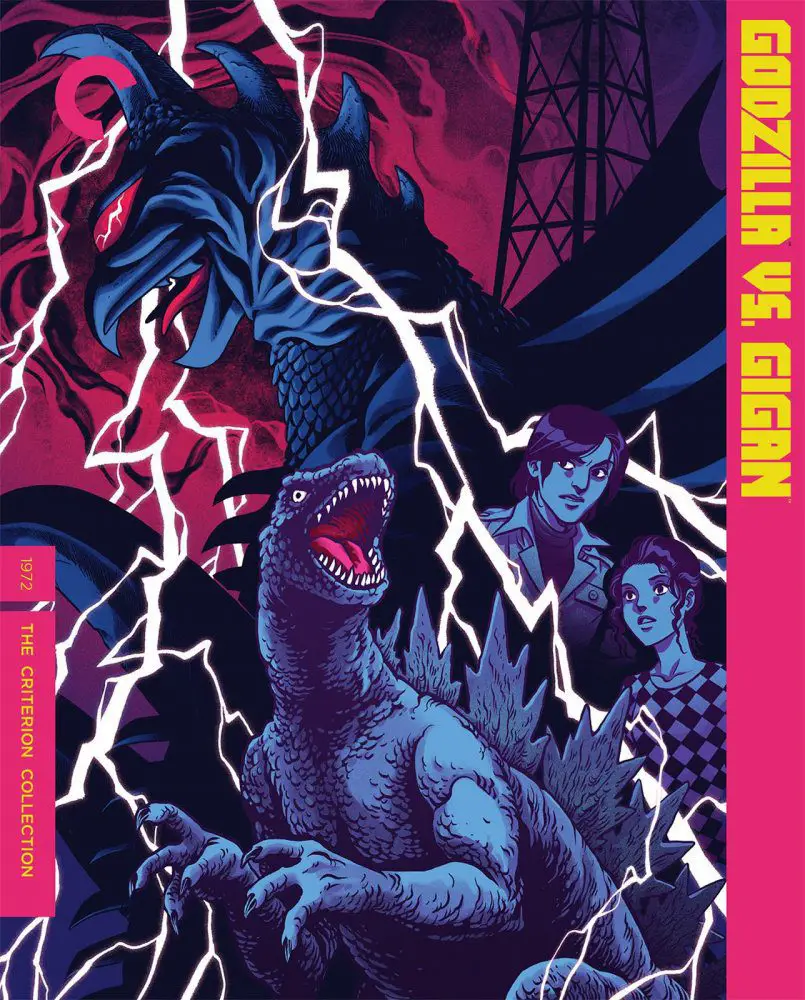
Godzilla vs. Gigan (1972)
Manga artist Gengo Kotaka (Hiroshi Ishikawa) stumbles onto an alien invasion plot as two aliens disguised as humans (played by Zan Fujita and Toshiaki Nishizawa) attempt to hire him for their new theme park. The aliens have kidnapped the brother (played by Kunio Murai) of a young woman (played by Tomoko Umeda). The sister and her friend (played by Minoru Takashima) team up with Gengo to figure out the aliens plans and save the planet. Meanwhile, Godzilla and Anguirus (Koetsu Omiya) battle with the alien-controlled King Ghidorah (Kanta Ina) and new kaiju Gigan (Kenpachiro Satsuma).
A refreshing take on the alien invasion plot, Godzilla vs. Gigan offers a fun cast of characters and an intriguing and mysterious plot. Intense and excellently paced, Godzilla vs. Gigan is the direction the series should’ve gone in with its continued alien invasion plots: Stories that break the mold and experiment instead of just rehashing the old formula with the same feel and tone over and over.

Godzilla vs. Megalon (1973)
Seatopia, a secret underwater civilization, takes control of a human-created robot, Jet Jaguar (Tsugutoshi Komada), as it releases its cyborg god Megalon (Hideto Date) to destroy the surface world. The robot’s creator (played by Katsuhiko Sasaki), his friend (played by Yutaka Hayashi) and his young nephew (played by Hiroyuki Kawase) look for a way to regain control of the robot. Meanwhile, Godzilla (Shinji Takagi) struggles to defeat Megalon and Gigan.
The series is showing its age, and its formula is cracking. There’s potential with Megalon and its underwater enemies. But the movie is full of wasted potential. The movie barely develops the ancient society, and the bad guys don’t ever have the upper hand long enough to seem like an actual threat to our heroes. Jet Jaguar and Megalon have cool designs, though, and I was disappointed Jaguar never appeared again in the Showa era. Maybe just stick to the Jaguar and Megalon scenes for this one and call it a day.
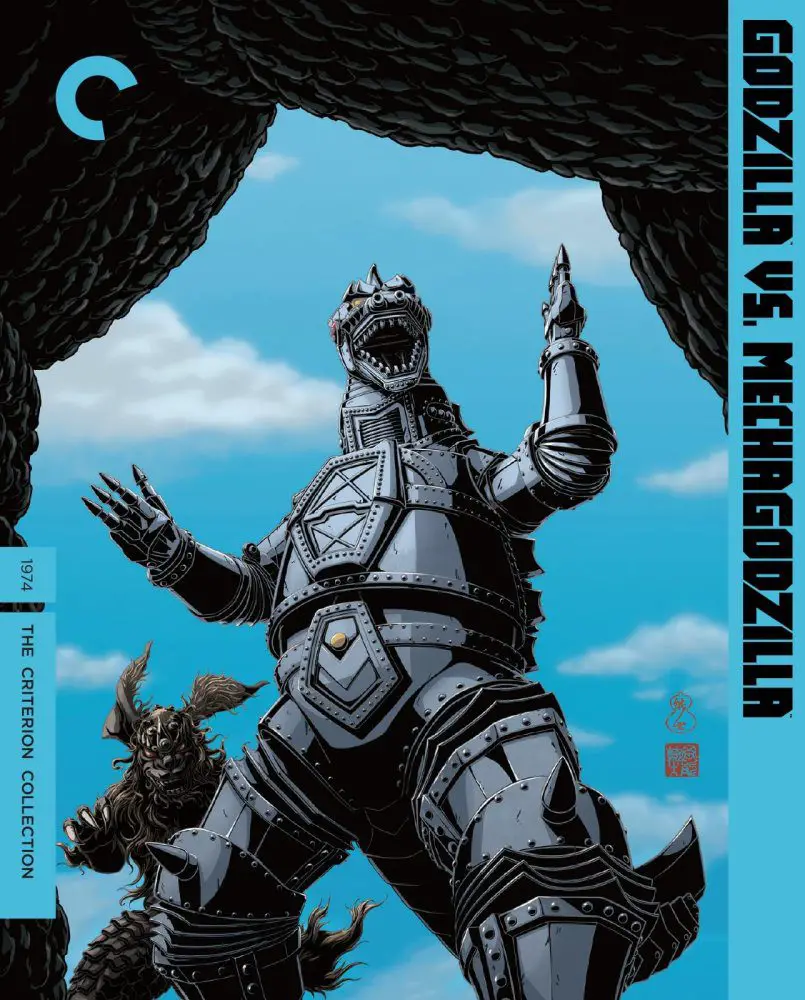
Godzilla vs. Mechagodzilla (1974)
A mystical prophecy foretells of a monster destroying a Japanese city. As the prophecy resurfaces, a robot that looks like Godzilla (Zushi), but may indeed be stronger than him, starts wreaking havoc. Mechagodzilla (Kazunari Mori) was built and is being controlled by aliens, of course, and it’s up to Godzilla (Isao Zushi) to stop the artificial creature before it destroys Japan and the world. But Godzilla may need help from a slumbering ancient beast name King Caesar (Kin’ichi Kusumi).
Did I mention this formula is getting old? Because it’s getting old. This is certainly an improvement over Godzilla vs. Megalon. There are some welcome twists and turns that keep the audience guessing. The aliens, their weapons, and their makeup are also cool, even if the latter is a Planet of the Apes rip-off. Mechagodzilla is a formidable foe that is built up enough that you could see why Godzilla couldn’t defeat him alone. Except he pretty much does just that. King Caesar fights in the climactic battle, but he’s taken out by Mechagodzilla before Godzilla joins the fight and he never really rejoins the fray. So, Caesar and Godzilla never really team up, and the prophecy is one big, disappointing lie.
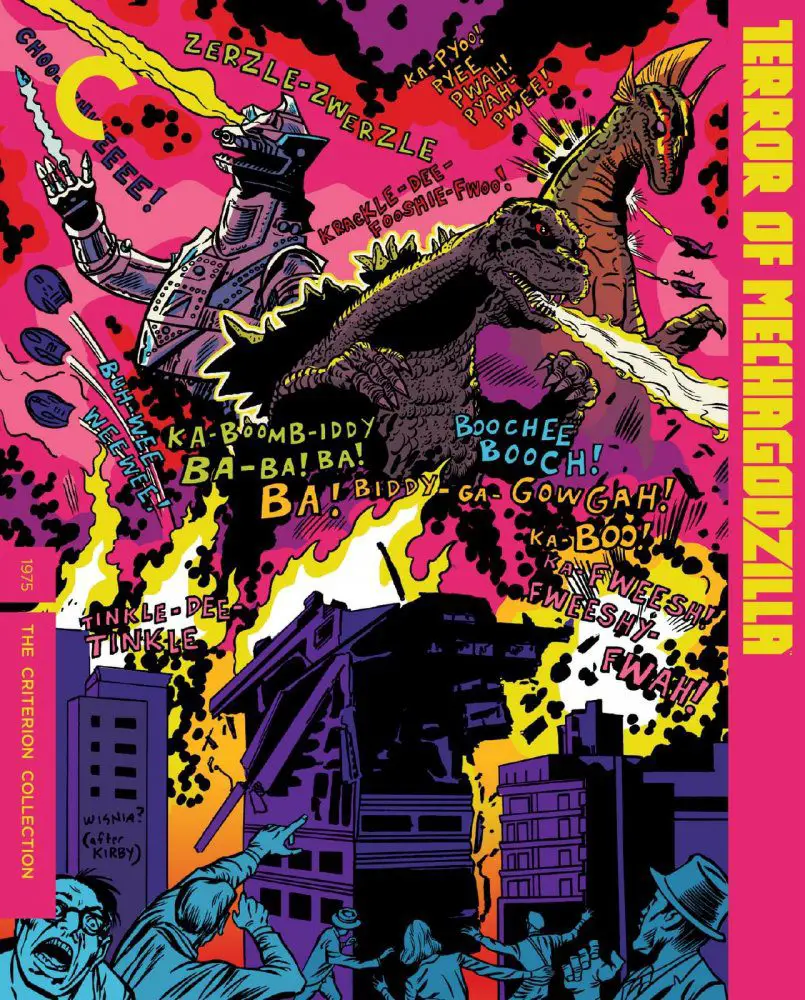
Terror of Mechagodzilla (1975)
The aliens from Godzilla vs. Mechagodzilla are back. With the help of a half-forgotten, crazed human scientist (played by Akihiko Hirata) and his daughter (played by Tomoko Ai), the aliens improve Mechagodzilla (Ise Mori). They aim to destroy Godzilla (Toru Kawai) and take over the human race once and for all. The scientist is using an invention to control a new kaiju, Titanosaurus (Tatsumi Fuyamoto), who wreaks further havoc on human ships. A group of humans stands in the aliens’ way. One of our heroes (played by Katsuhiko Sasaki) falls in love with the scientist’s daughter, but their romance may be destined for tragedy.
A great conclusion to the Showa Era, Terror of Mechagodzilla features probably the best human story since the original film. The tragedy and pathos hit all the right notes, and those storylines are concluded with shots practically taken out of paintings they are so beautiful. The cinematography in this series is seriously deserving of all the praise. The Showa Era concludes with possibly the best kaiju battle of them all. With the return and prominent placing of the original Godzilla theme for the first time in a while, I truly cheered when the grand final showdown concluded.
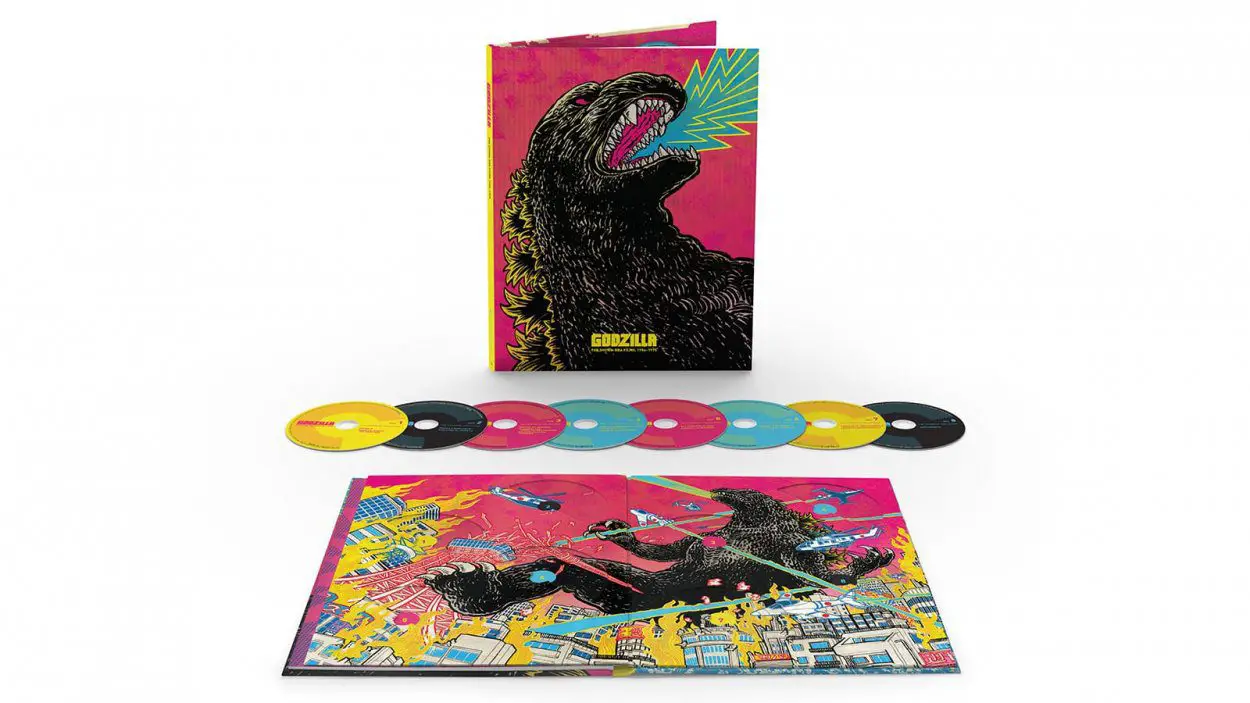
The Showa Era can be formulaic, repetitive and they can flow together, making it hard to remember which is which. They’re also thoughtful, experimental, fun, sometimes serious kaiju movies that look at real-world issues. I highly recommend checking them out. You may be surprised by their quality, daringness, variety and pure entertainment.
Listen to the premiere episode of the 25YL podcast The Criterion Collectors, a discussion of some of the films in the Criterion Godzilla boxset and watch the video on our YouTube Channel discussing the Top 10 Reasons to Watch Godzilla’s Showa Era.



